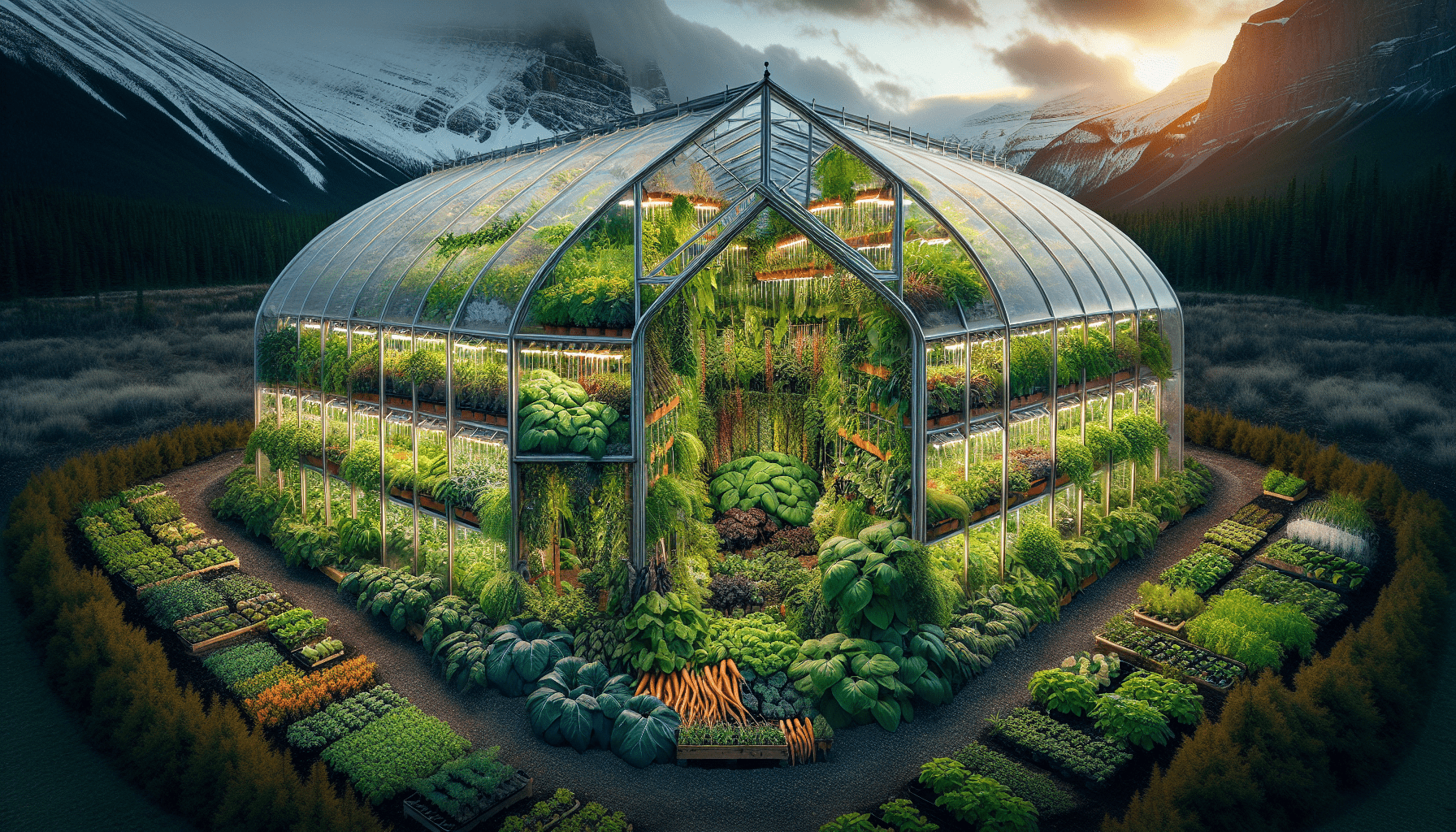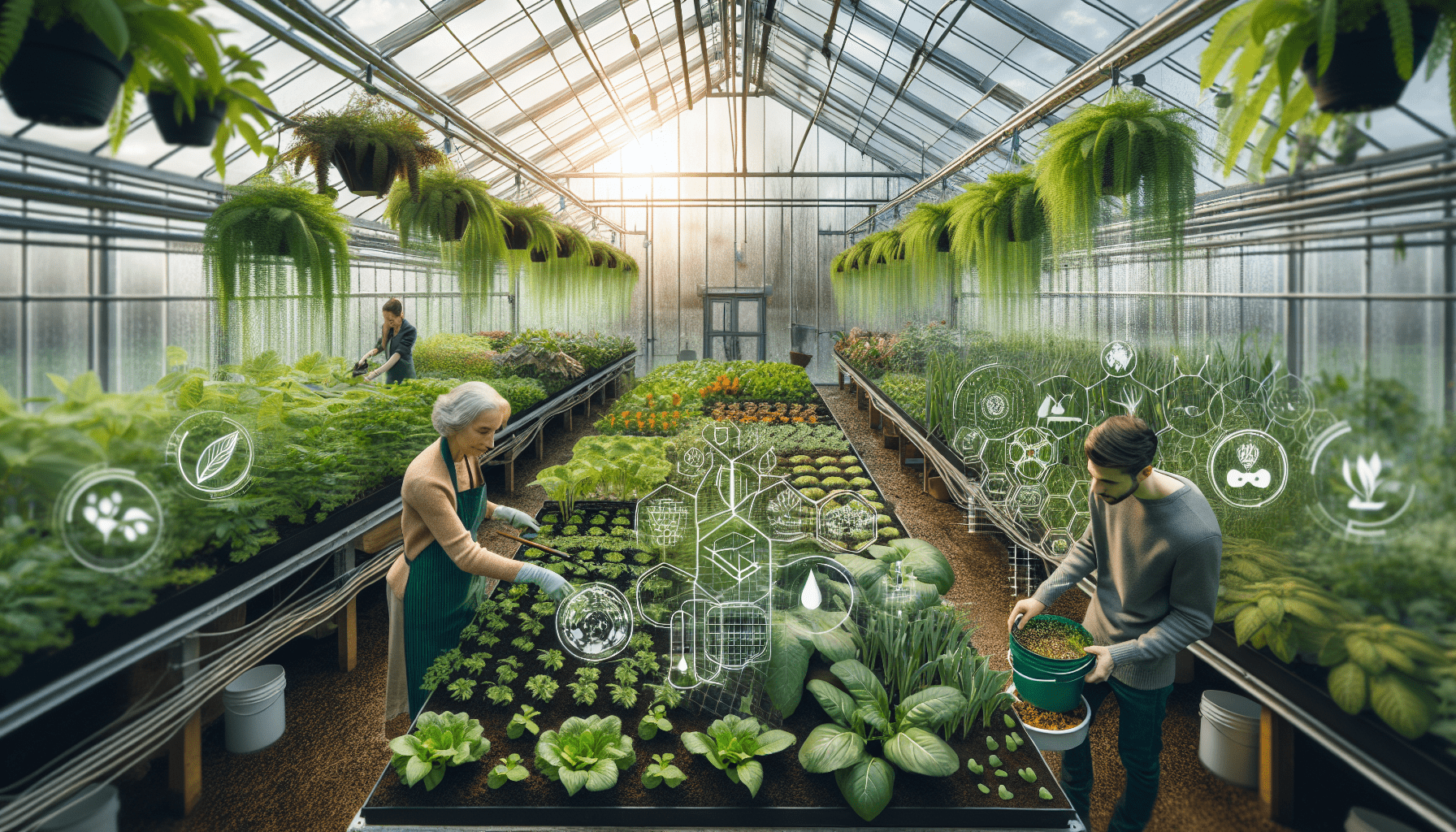
Imagine yourself dwarfed by towering tomato plants, surrounded by a medley of vibrant herbs, and met with the sweet scent of blooming flowers. “Exploring Greenhouse Gardening in Canada” is your guide into the world where nature wears no season, providing an oasis of perpetual green in the heart of chilling winters. This article will escort you through the captivating horticultural practice and its unique value in the Canadian landscape. With our lighthearted and engaging tone, you’ll find yourself not only gaining knowledge about greenhouse gardening but also cultivating a newfound appreciation for this warm serenity amidst the frost.

Understanding Greenhouse Gardening
Greenhouse gardening is a method of gardening where plants are cultivated within a specialized structure known as a greenhouse. These structures vary in size and complexity, from simple plastic or glass shelters to high-tech controlled environments. In a greenhouse, the garden environment, including temperature, lighting, and humidity, can be controlled for optimal plant growth. This allows gardeners to grow a wider variety of plants and flowers throughout the year, regardless of external weather conditions.
Definition of greenhouse gardening
Greenhouse gardening involves cultivating plants in a dedicated enclosed space to protect and nurture them in a controlled environment. This space, known as a greenhouse, typically includes clear or translucent materials that let sunlight in while keeping external weather outside. The goal is to create an environment where plants can thrive throughout the year, even during harsh winter months or scorching summer days.
Benefits of using a greenhouse in Canada
In a country like Canada, with its diverse climate zones and lengthy winters, a greenhouse can be a powerful tool for any gardening enthusiast or professional grower. It can allow you to grow fruits, vegetables, and plants that may not otherwise survive in your region’s natural climate. A greenhouse offers plant protection from frost, heavy rain, or excessive heat, essentially extending the growing season. It can also help to guard your plants against pests and diseases, improving plant health and yield.
Different types of greenhouses available
There are many types of greenhouses to choose from, depending on your specific needs and budget. They range from basic cold frames, which are unheated and typically used in spring and fall, to large glasshouses, which can maintain tropical conditions year-round. In between, there are hoop houses, lean-tos, and solar greenhouses. All these types have unique traits and can be customized for different climates, spaces, and gardening goals.
The Climate Challenges in Canada
Canada’s climate presents unique challenges to gardeners and growers. Understanding these challenges is key to the successful operation of a greenhouse within the country.
Overview of Canadian climate zones
Canada is a vast country comprising eight climate zones, each with distinct characteristics. From the short, cool summers and long, bitterly cold winters of the Arctic to the milder conditions of the Pacific Maritime and the variation of the Southern Continental, the climate significantly impacts what and when you can plant.
The impact of Canadian winters on gardening
Canada’s long and harsh winters can significantly limit the growing season for gardeners. The persistent frost and snow can damage or kill plants, making it almost impossible to grow certain fruits and vegetables year-round.
How a greenhouse can extend the growing season
A greenhouse can help overcome these challenges. It can provide a warmer, controlled environment during the colder months, effectively extending the growing season. It also allows for the cultivation of plants that would otherwise struggle or fail in the local climate.
Selecting the Right Location
Choosing a location for your greenhouse is crucial to its success and your enjoyment of it.
Factors to consider when choosing a site
You must take into account various factors when choosing a site for your greenhouse. These may include access to water and power, proximity to your house, and the orientation of the greenhouse. You should also consider the slope of the ground and the potential impact of trees and other buildings which may shade the greenhouse.
Sunlight requirements
For most greenhouses and plants, a sunny, south-facing location is ideal. Greenhouses require at least six hours of direct sunlight per day for optimum growth. More sunlight means better growth, so avoid locating your greenhouse where it will be shaded by trees or buildings.
Protection from extreme weather
Considering weather protection is also important. Gusting winds can damage a greenhouse, so if your site is particularly exposed, you might need to provide some form of windbreak. At the same time, good drainage is required to prevent waterlogging in the surrounding area.
Greenhouse Structures and Materials
Greenhouses can be crafted from a variety of structures and materials.
Overview of greenhouse designs
There are numerous greenhouse designs out there, each with its unique advantages and disadvantages. Freestanding greenhouses offer flexibility regarding size and layout, while attached or lean-to greenhouses are great for smaller gardens as they are built against an existing structure, like a wall or a shed.
Materials used in greenhouse construction
Glass and polycarbonate are the most common materials used in greenhouse construction, although plastic films are also used. Both glass and polycarbonate are excellent glazing materials, transparent to the sunlight necessary for plant growth. They are also more durable and longer-lasting than plastic.
Choosing the right structure for your climate
Choosing the right structure for your climate is also essential, especially in Canada. Some structures may be better suited to heavy snow loads or high winds. A simple hoop house may be sufficient in mild climates, while a sturdier structure might be needed in harsher regions.

Creating an Ideal Environment
Once you’ve chosen and installed your greenhouse, the next step is to create the perfect growing environment.
Temperature control strategies
To regulate temperature in your greenhouse, you might need heating or cooling systems, depending on the time of year. Adding insulation can also help conserve heat in winter, while ventilation and shade cloth might be necessary to cool down the greenhouse in summer.
Humidity management
Humidity is another important factor. Moisture in the greenhouse can lead to plants’ growth problems and increase the risk of diseases. Ventilation and exhaust fans can help reduce humidity levels and increase air circulation.
Ventilation needs and solutions
Good ventilation is key to a successful greenhouse. It maintains temperature and humidity at optimal levels and ensures plants get plenty of fresh air. Opening doors, windows, or using mechanical fans can achieve ventilation in your greenhouse.
Soil and Water Management
Healthy soil and efficient water management are crucial for the successful growth of your plants, and this is no less true in a greenhouse context.
Choosing the right soil mix
Different plants require different types of soil, so it’s important to choose the right mix for the plants you’re growing. General-purpose soil mix is good for most plants, but some plants may require specific types of soil or pH levels.
Irrigation systems for greenhouses
For efficient watering, you might want to consider installing an irrigation system in your greenhouse. This could be a simple manual system, like watering cans or a hose, or something more complex, like a drip irrigation or an automated system, which can save time and ensure your plants get just the right amount of water.
Nutrient management techniques
Plants in a greenhouse can exhaust their soil’s nutrients quicker than in a regular garden. Therefore, it’s important to regularly replenish these nutrients, either through the addition of organic matter compost or by using fertilizers.
Cultivating a Variety of Plants
With a controlled environment at your disposal, the variety of plants you can grow in a greenhouse is vast.
Best plants for greenhouse gardening in Canada
Choosing the right plants for greenhouse gardening in Canada depends on your greenhouse’s size and conditions, but some of the plants commonly grown include tomatoes, lettuce, peppers, cucumbers, and a range of herbs.
Seasonal planting schedules
Having a seasonal planting schedule can help you maximize your greenhouse’s productivity all year round. This may involve seeding cold-hardy plants early in spring while frost is still a threat outside or planting heat-tolerant varieties in the summer.
Exotic and tropical plants under Canadian conditions
With the right conditions and care, your greenhouse can also be home to a range of exotic and tropical plants that wouldn’t survive the Canadian outdoors. Examples may include citrus trees, orchids, bromeliads, and more.
Pest and Disease Control
While greenhouses can protect plants against certain pests and diseases, they can also become breeding grounds for others if not carefully managed.
Common greenhouse pests and diseases
Common pests and diseases in a greenhouse may include aphids, whiteflies, red spider mites, and powdery mildew. Regularly inspecting your plants and identifying problems early can help keep these issues in check.
Organic and chemical control methods
There are a variety of organic and chemical methods available to control pests and diseases in your greenhouse. These include the use of beneficial insects such as ladybirds and lacewings, the strategic introduction of certain plants that deter pests, or the application of chemical pesticides or fungicides.
Preventative measures to maintain plant health
Preventative measures are often the best way to maintain plant health. These include good hygiene practices, like regular cleaning of the greenhouse, proper ventilation, and avoiding overwatering to prevent the spread of diseases.
Technological Advances in Greenhouse Gardening
Greenhouse gardening also benefits from a variety of technology advancements.
Automated watering and climate control systems
Automated systems can help monitor and manage everything from watering and fertilizing to temperature, light, and humidity. They can save time and ensure consistency for optimum plant growth.
The role of artificial lighting
Artificial lighting can supplement natural light during the darker months and support plant growth. LED lights are often a popular choice due to their energy efficiency and broad spectrum coverage.
Innovations in sustainable greenhouse farming
Innovations in sustainable greenhouse farming involve water recycling systems and the use of renewable energy sources. These technologies can make your greenhouse more environmentally friendly and potentially reduce operating costs in the long run.
Economic Considerations and Potential Revenue
A greenhouse can be a significant investment, but it can also open up opportunities for earning revenue.
Cost of setting up a greenhouse
The cost of setting up a greenhouse can vary widely, depending on the size, materials, and technology used. It’s important to budget not only for the structure itself but also for additional equipment, soil, plants, and ongoing operational costs.
Potential for income through selling produce
A greenhouse can provide a source of income by selling the produce you grow. This could be selling fresh vegetables, fruits, and herbs to your local community, providing plants for local landscaping companies, or even selling exotic plants to other enthusiasts.
Grants, subsidies, and financial support for greenhouses
In some areas, there may be grants, subsidies, or other types of financial support available for setting up a greenhouse. Always check what local or national programs might be available to you before embarking on your greenhouse journey.
In conclusion, greenhouse gardening offers many opportunities and rewards, particularly in a diverse and challenging climate like Canada. Whether you’re a beginner gardener or a seasoned pro, a hobbyist, or looking to make a business out of it, a greenhouse can provide a unique and productive gardening experience year-round.

